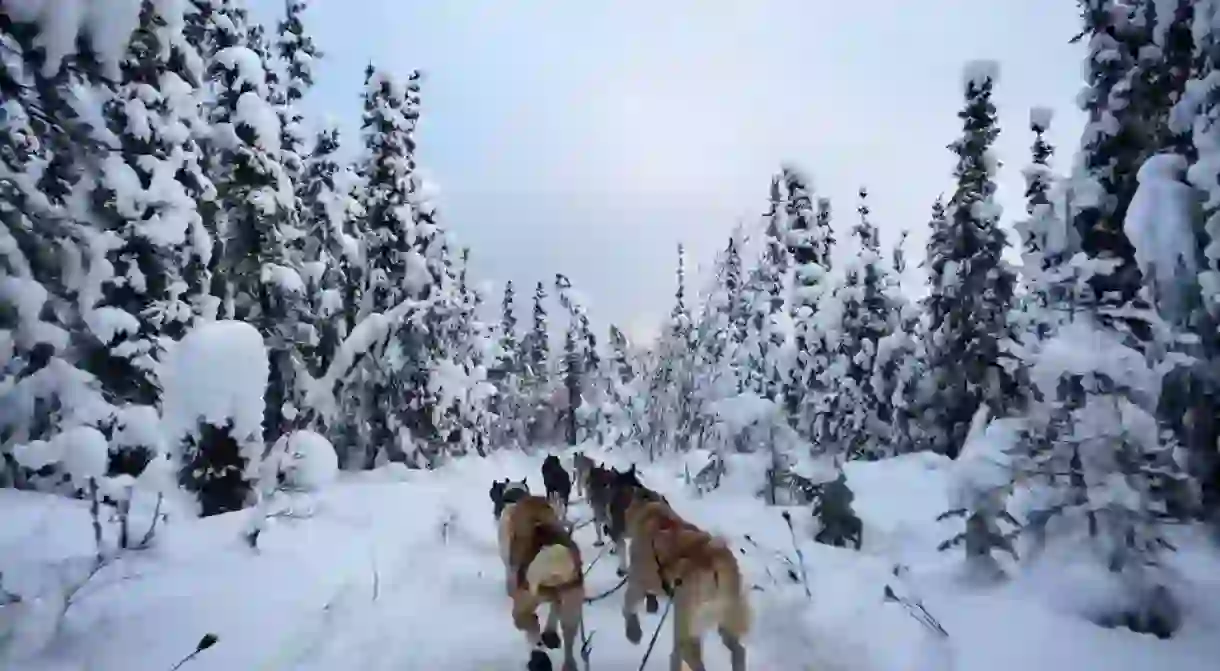A Brief History of Alaska’s Official Sport: Dog Mushing

Dog mushing was dubbed the official sport of the 49th state in 1972, a year before the first official Iditarod Trail Sled Dog Race but centuries after locals started using dogs to pull sleds to transport people, supplies, and goods.
For hundreds of years, Alaska Natives used dogs to help with hunting, for protection from Alaska’s wild animals, and for travel. Later, when gold brought settlers to the state at the end of the 1800s, dog sledding was adopted as a way to scope out routes around the area, deliver mail, and transport people between remote mining camps.

Dog mushing hit the national radar in 1925 when a diphtheria outbreak threatened to extinguish the village of Nome, and a series of dog sled teams were tasked with carrying the life-saving serum nearly 700 miles (1,127 kilometers). That event helped inspire the current Iditarod Race (as well as oodles of blockbuster movies).
The Iditarod, also known as The Last Great Race®, spiders 1,000 miles (1,609 km) across the state from Willow to Nome (though there’s a ceremonial start in Anchorage the day before the real deal). The slowest winning time was 20 days, 15 hours, two minutes and seven seconds in 1974. Since then, the race has gotten considerably faster—the winning musher now takes roughly eight days to finish.

While the Iditarod is the best-known sled dog race in Alaska, dozens of other races, of varying distances, take place across the state during its long winter season.
Though it’s largely Siberian Huskies and Alaskan Malamutes that are shown as sled dogs in Hollywood movies, the more modern sled dogs are actually Alaskan huskies, a type of dog with a mixed genetic heritage that is well suited to the demand of the trail.

The athletes don’t stop training when the snow has melted for the season, though. During the summer months, mushers attach the team to an all-terrain vehicle instead of a sled to keep up with their training regimen.
The sport has also contributed to Alaska’s tourism industry. Many mushers open their kennels up to visitors to meet the race team, play with the puppies contending to be full-fledged sled dogs, hear stories about life on the trail, and go for a ride.













